Draw a Circle With a Border in Inkscape
Information technology's an everyday need for us researchers to create fluxograms, graphs, schematics or any other graphic style to assistance the public better sympathize our results. When it comes to a unproblematic presentation, the default tools may suffice, however, for more than circuitous tasks, we need extra help - that's when Inkscape comes into play.
Inkscape is a plan dedicated to vector manipulation, which makes it a generic tool to create all sorts of figures, from logos to diagrams. It'due south different from GIMP, since the latter is generally designed to manipulate raster images. If the distinction between vectors and raster images is a little blurry, check out this LibLab tutorial most prototype formats. Inkscape can exist found for download here.
Applied instance
Remember the embryo from the Introduction to GIMP tutorial ? It was this image:
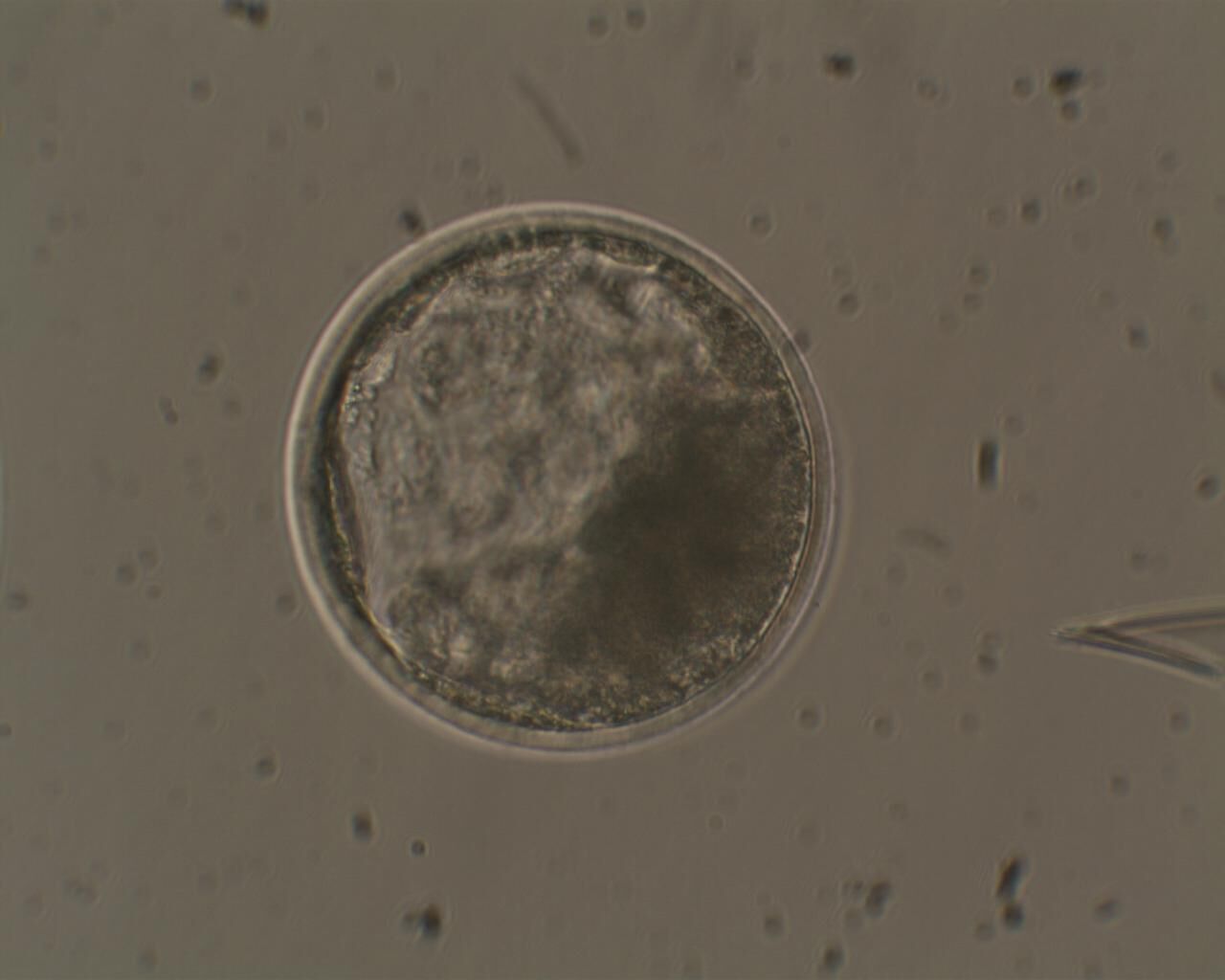
For the purposes of this tutorial, we wish to create a schematic of the embryo epitome, and to explain its main structures. Then… let's get started with Inkscape !
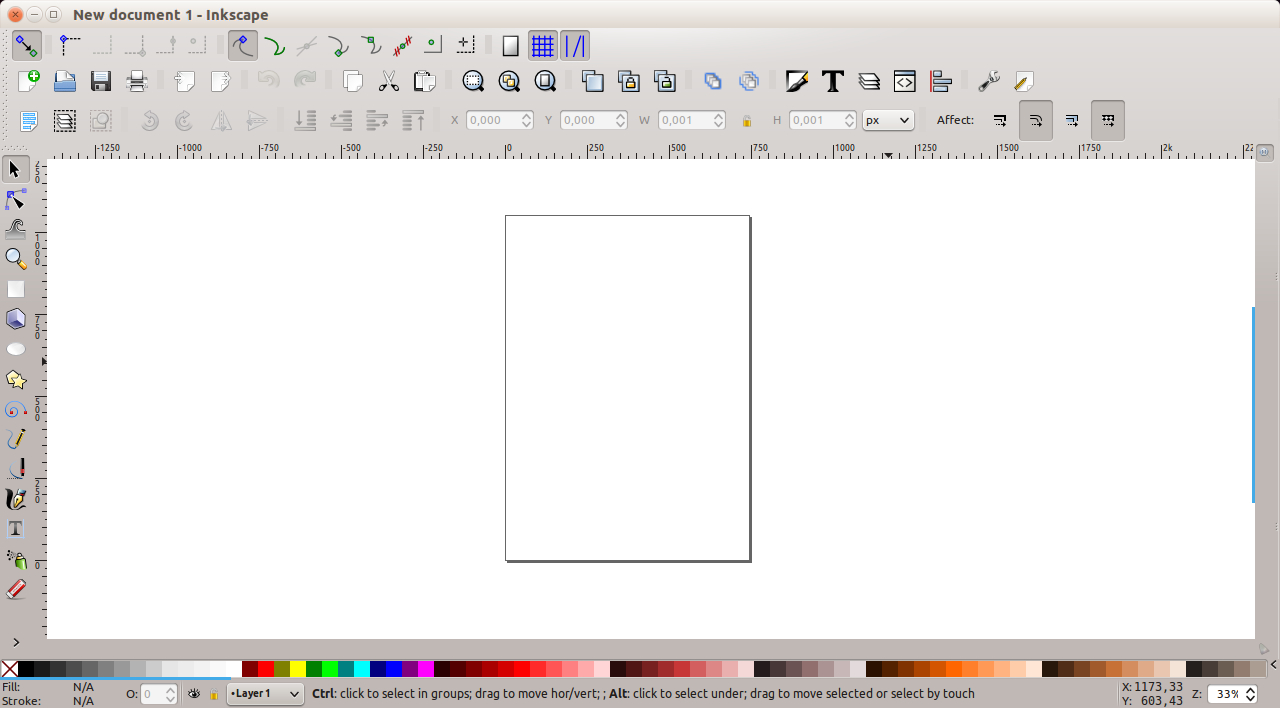
The Inkscape window should look somewhat similar the above. It may vary slightly depending on whether yous employ a Linux, Os 10 or Windows version, but the same tools are bachelor in all versions.
Basic shapes
First, let's create a circle to represent our embryo. To do this, use the "circle" tool, found in the toolbox to the left side of the window. If for some reason yous cannot see the toolbox bar, go to View > Show/Hide > Toolbox.
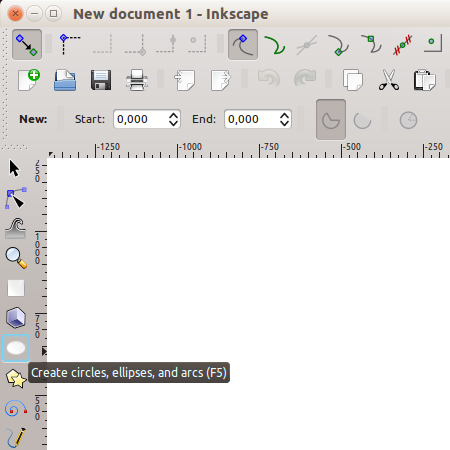
Once the tool is selected, click and drag onto the screen to create your circumvolve. While dragging, keep the Ctrl primal pressed to create a circumvolve instead of a ellipse. By holding Shift the circumvolve will be centered on the point you first clicked, instead of this indicate being the corner of the bounding box.
After creating your object, right click on it and get to "Fill up and Stroke". A pocket-size window should open on the right, with 3 tabs:
- "Make full", which you can use to change the fill color of your object;
- "Stroke paint", which yous can use to choose the colour of the object edge
- and a last one named "Stroke manner", which enables you to choose the properties of the stroke, such as width, for case.
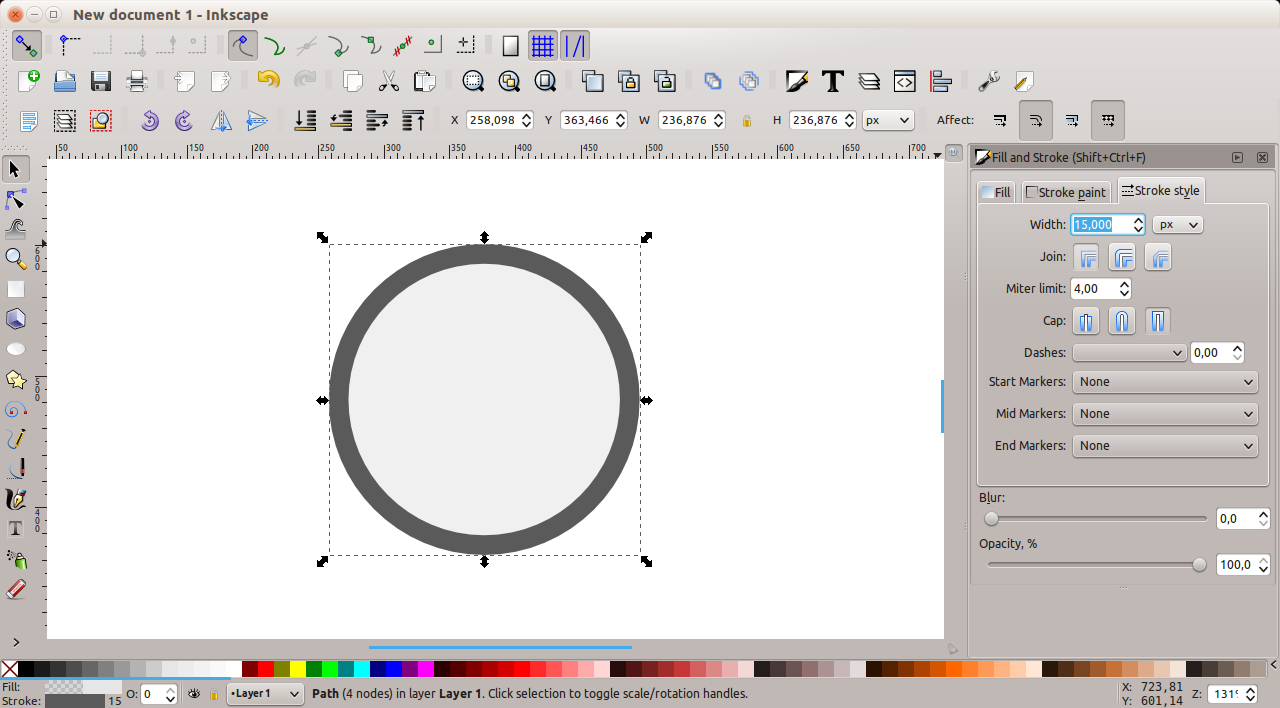
Continue in mind that although nosotros're using a circumvolve as example here, the same applies to other shapes that you can find in the toolbox
Aligning objects
Create two circles. Give the outset one a light gray, wide edge and make the second i a little smaller, with a thinner, night gray border (see beneath).
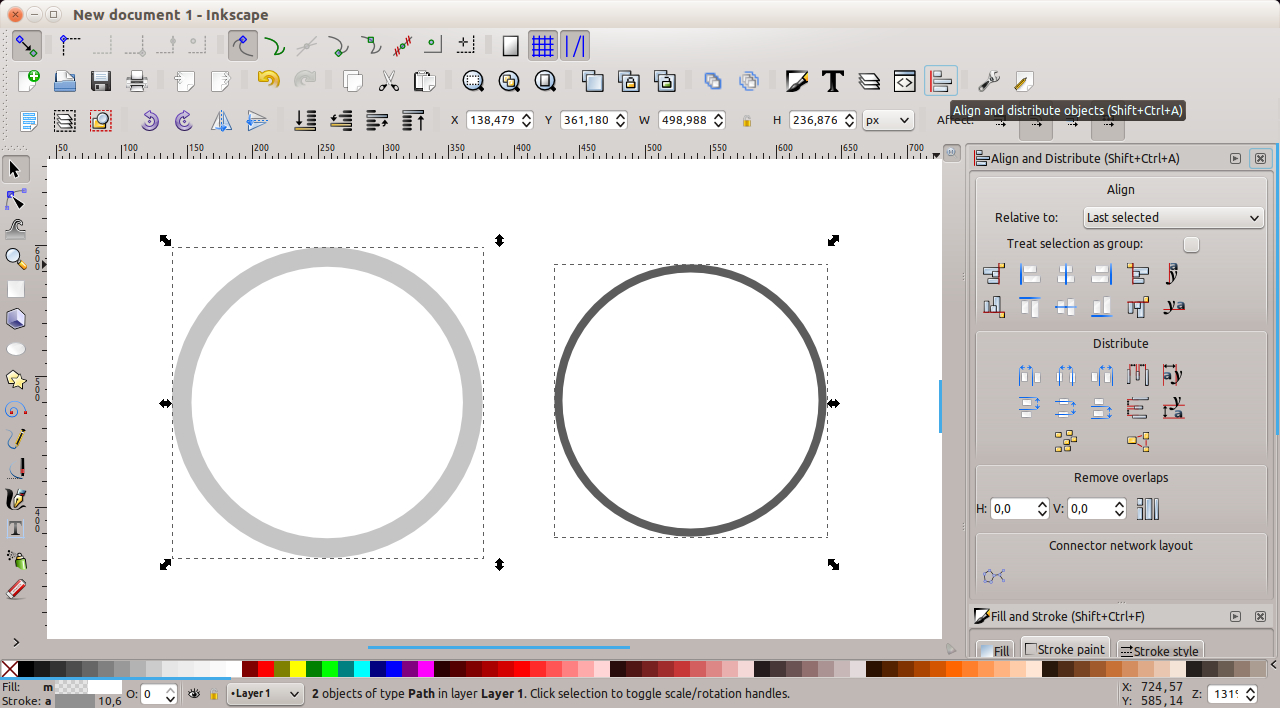
Now permit'due south center those two circles.
To do this, we can use the "Align and distribute objects" tool that you tin can find in the elevation part of the window. If y'all cannot see it, go to View > Evidence/Hide > Commands bar. After clicking on the tool, a window should appear on the right side.
With the two circles selected, make certain the "Relative to" choice is set up to "Last selected" and and then click on the options "Center on vertical axis" and "Center on horizontal axis", represented by the icons with two white objects and a small bluish line passing through their center.
The upshot should be somewhat similar to what you lot can see below:
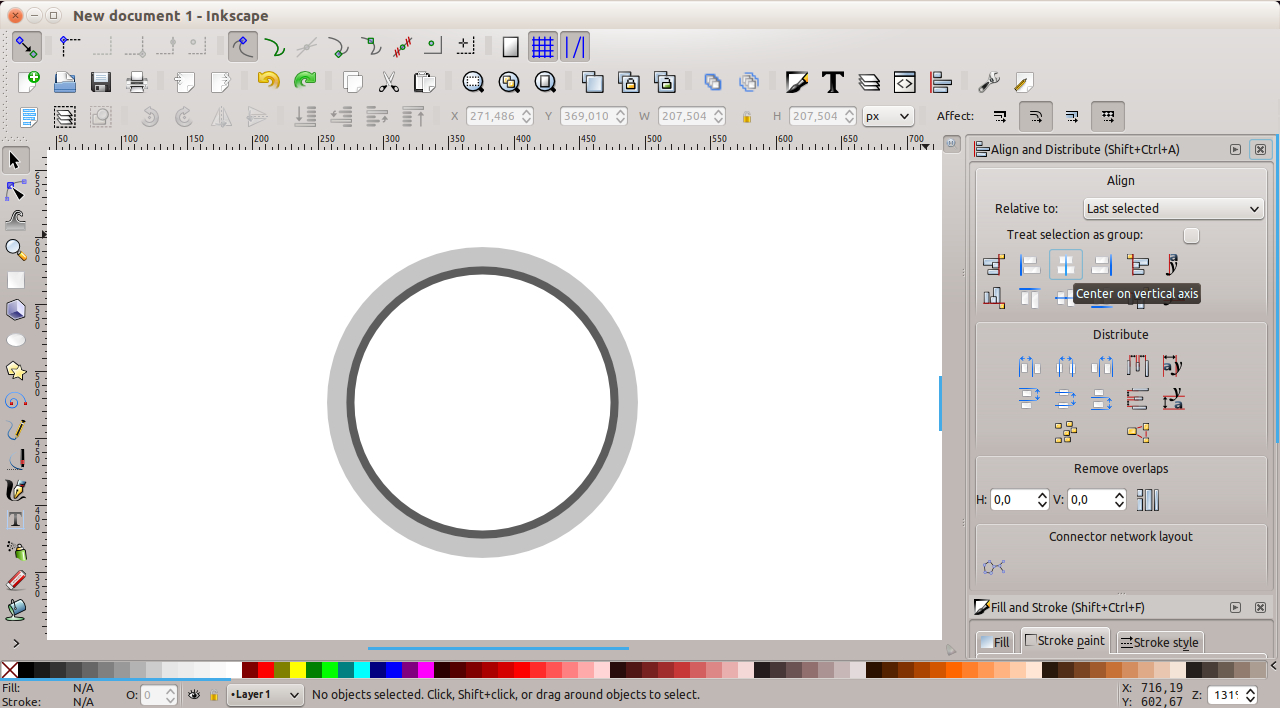
NB : Other alignment options are possible, such equally with the left or right edges, simply for our purposes we want the circles to be aligned and centered.
These two circles represent two different structures of the embryo, the "zona pellucida", an outer glycoprotein layer that surrounds the early stages of the embryo, and the "trophectoderm", a layer of cells that in later stages will develop the embryonic annexes. Looking closely at the original image, you may be able to place both.
The main role of the embryo at this phase is the "inner jail cell mass", the dark region yous can encounter on the picture. Let'south model it now.
Creating a custom shape
Generally, when we need a custom shape, the easiest approach is to start from a standard one and modify information technology. Let'south kickoff with some other circle, its size about two thirds of the others'.
For this new circumvolve, you lot tin can apply the same dark grayness as fill color that nosotros have used for the stroke of the previous circle. Do not add a stroke (select the "x" in the "Stroke paint" options).
At present, we can enable the editing of the vectors: select your object and get to "Path > Object to path". Now select the "Edit path by nodes" tool on the left and click again on your object. You should come across something similar to this:
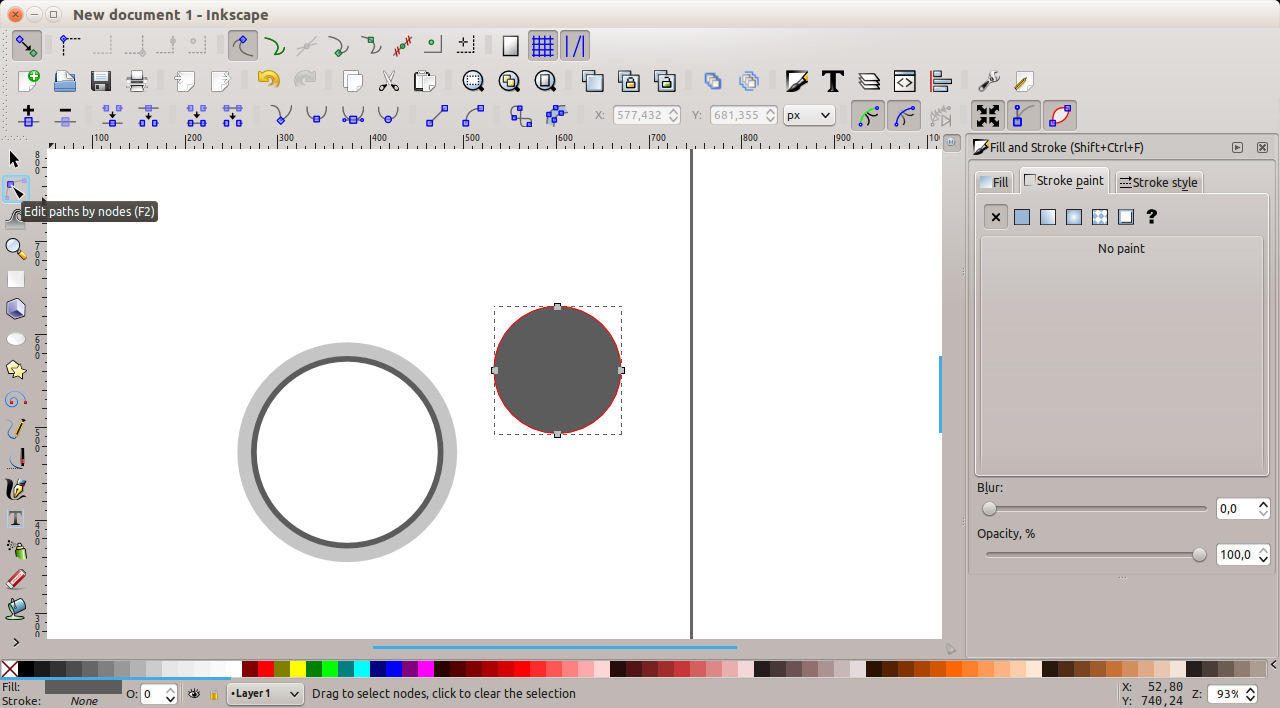
This means that we can now edit each node of the circumvolve individually.
With the "Edit path by nodes" tool selected, drag the top node of the circle down a picayune. You may hold the Ctrl key to make the movement orthogonal. During the editing, you lot may want to zoom in on your image, belongings the Ctrl fundamental and using the mouse roll. The outcome should exist similar to the image below:
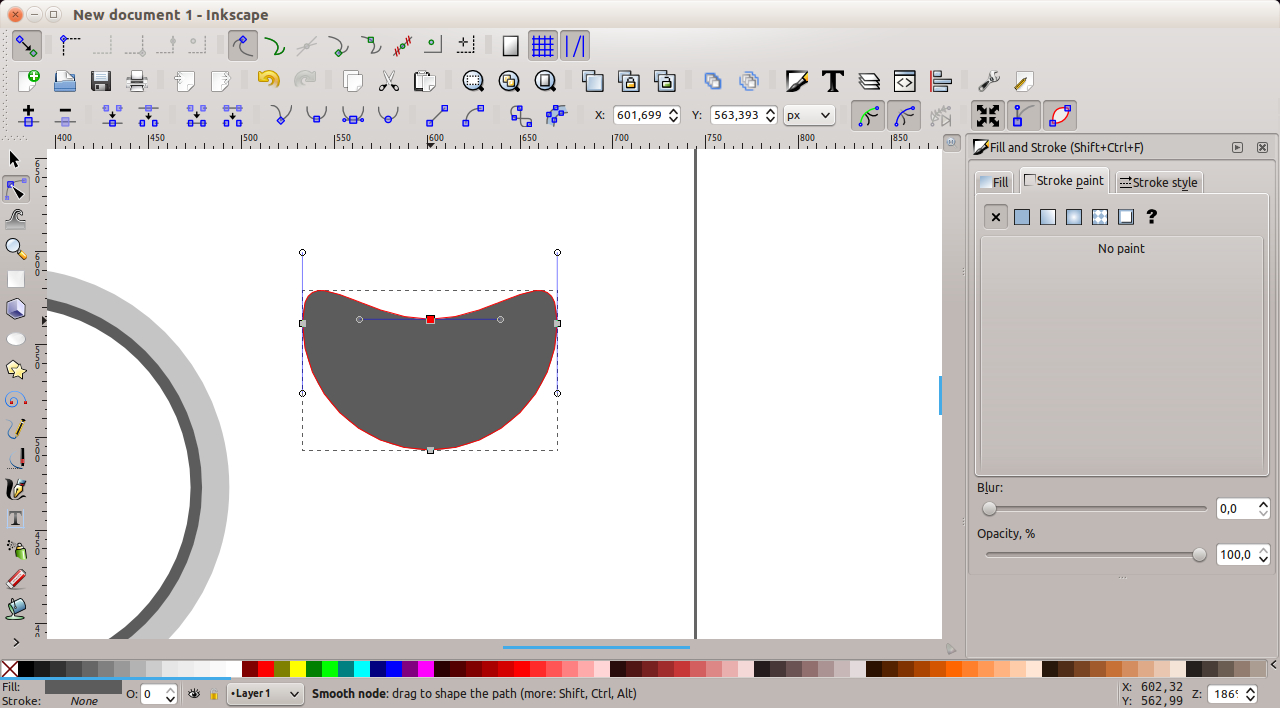
Scaling and rotating
Now we need to movement our object to a position inside the other circles. To move your object as a whole (and avert editing individual nodes), use the "Select and transform objects" tool (top left on the toolbar).
NB. When selecting the object, you volition detect that black arrows announced on the bounding box that surrounds information technology. You tin can use these arrows to scale your object and make it fit the inner part of the large circle.
Past clicking one time again on the object yous volition enable the rotation tool, and using the curvy arrow on the corner of the bounding box you tin can rotate your object. The result should resemble what yous run into below:
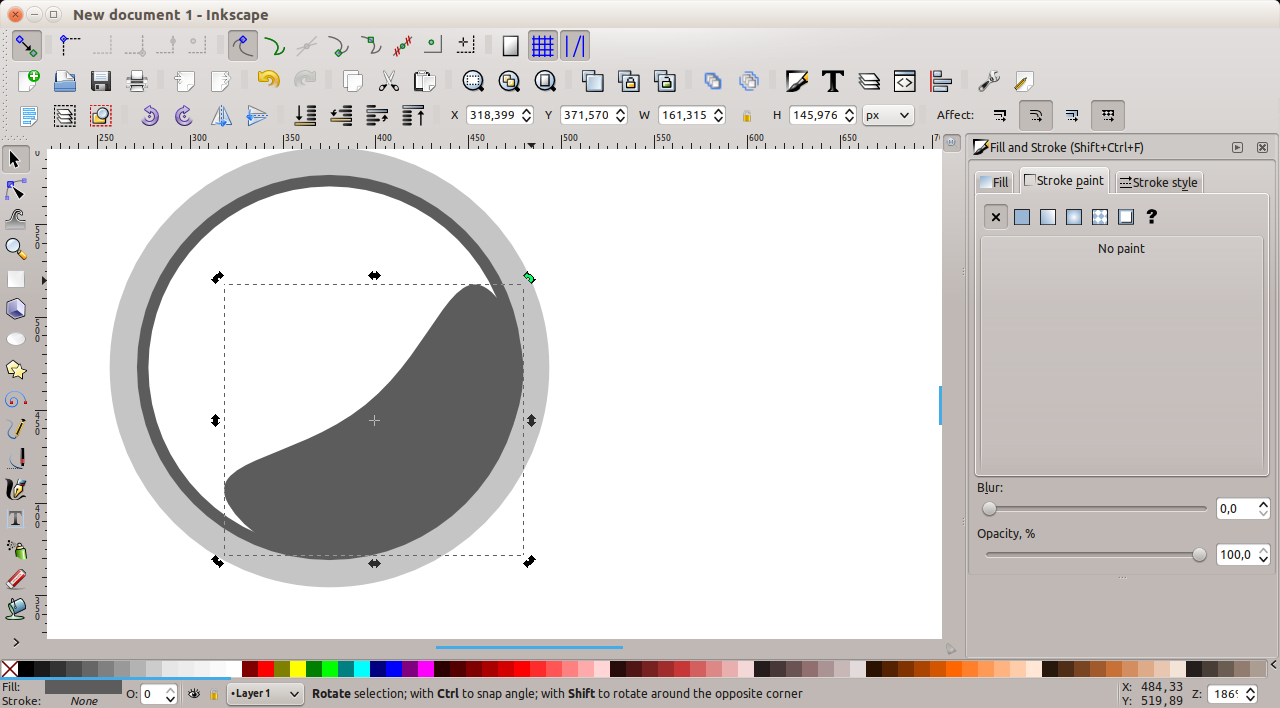
If yous feel like it, you tin can edit the nodes once more to brand the "inner jail cell mass" fit amend with the other objects. When editing the nodes, discover the sparse blueish lines that cross each 1 of them. They tin can be used to control the Bezier curves of the object, as seen beneath:
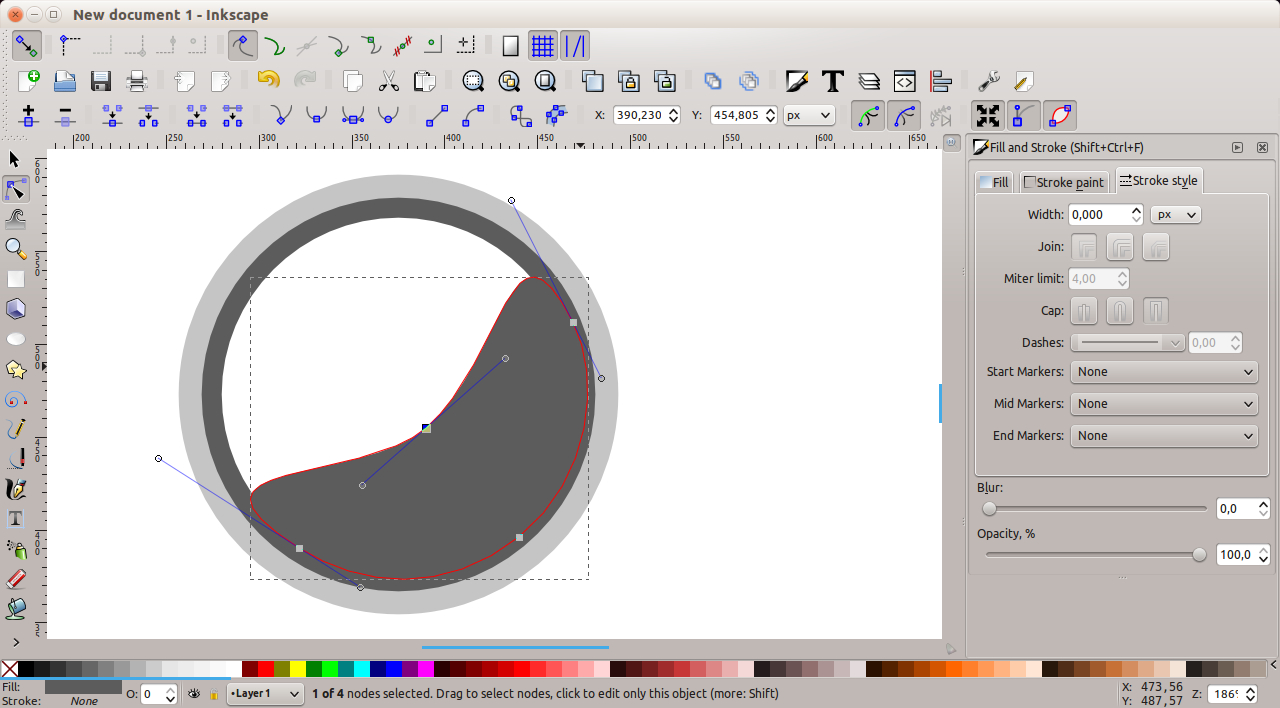
Creating text
The "Text" tool, establish on the left side of the window, allows us to easily place text on our prototype.
To practise this, click on a blank space and create text objects with the names of the structures. In this case, we volition utilize the terms "zona pellucida", "trophectoderm" and "inner prison cell mass".
To motility your text, remember to utilize the "Select and transform" tool (the black arrow).
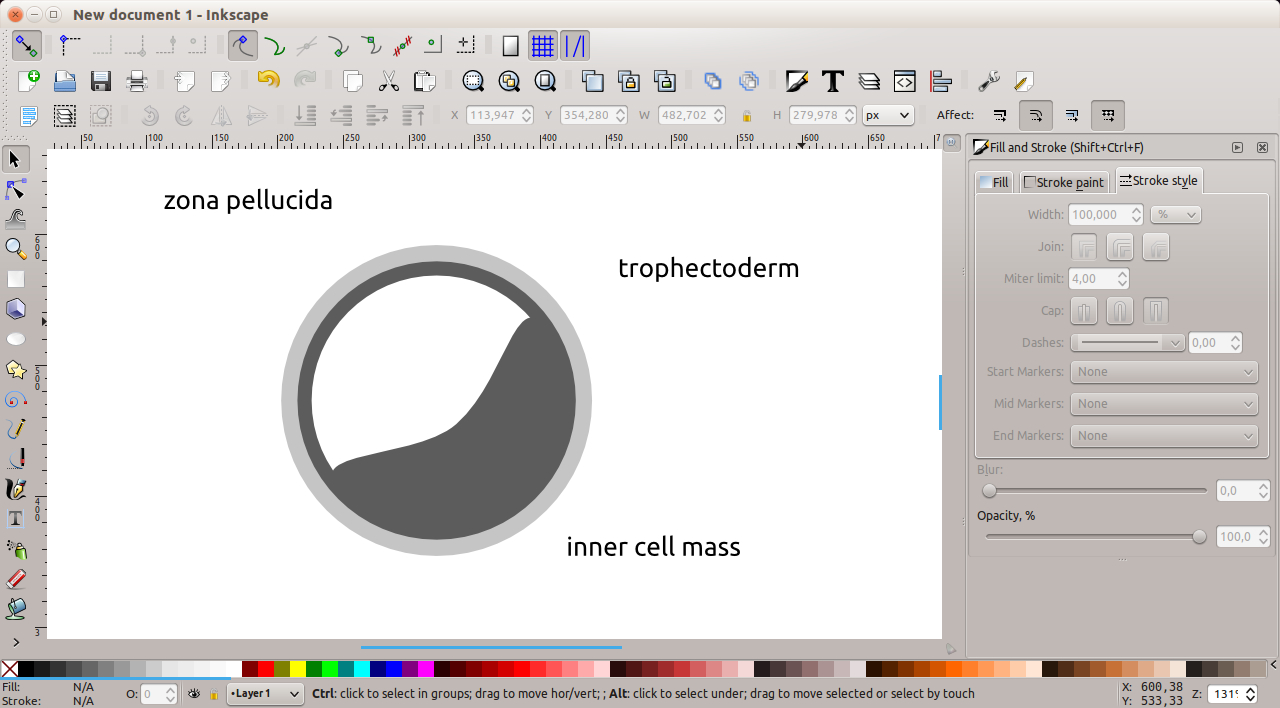
Creating lines
Nosotros now demand to add lines pointing from a construction to the respective proper noun.
To practise this, use the "Draw bezier curves and straight lines" tool (on the left: the icon is a pencil). Once this tool is selected, y'all can left-click where you lot desire the line to outset, then click on the next node (or nodes if you want). Afterward the final desired node is added, correct-click to stop and finish the line. After the line is fatigued, you can select it with the "Select and transform" tool and modify its properties – simply as we did with the circumvolve object.

Saving and exporting
We now have a nice schematic showing the structures of an embryo which we tin can easily use in a presentation!
To relieve your work as a vector file, which can be edited after, just get to "File > Salve as", and select "Inkscape SVG" as the file type.
You may besides want to export it as a raster PNG image. To do this, select all your objects and go to "File > Export Bitmap". In the window that opens, click "scan" to select a place to salve your file (and don't forget the file extension!), and so click on export, as seen beneath:
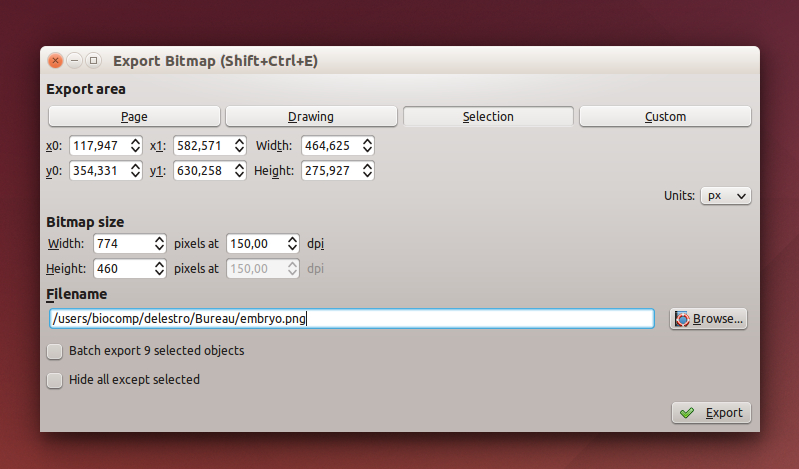
And that's it! Your work is now exported and ready to exist used!
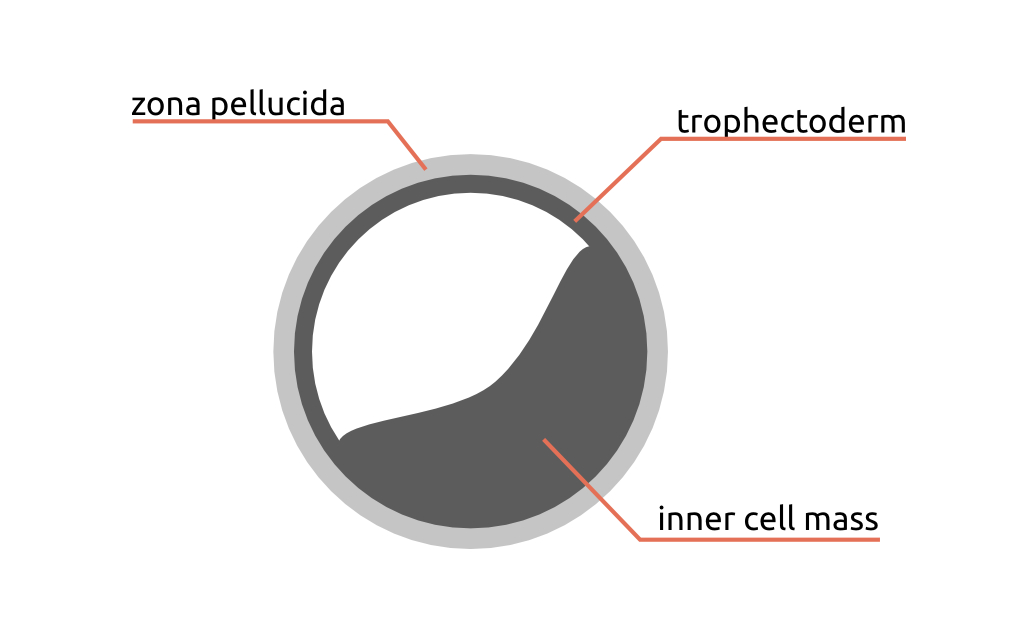
chaneythabelloved85.blogspot.com
Source: https://explore.psl.eu/en/tools-and-training/tutorials/introduction-inkscape
0 Response to "Draw a Circle With a Border in Inkscape"
Post a Comment